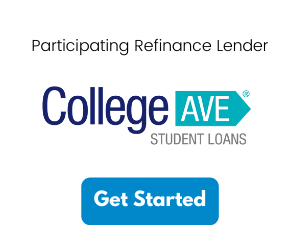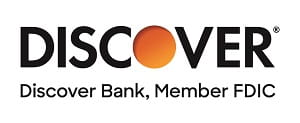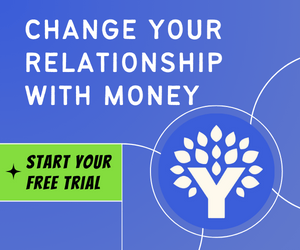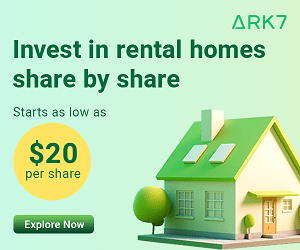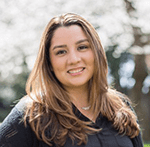The content and opinions provided on this site have not been provided or commissioned by any issuer of the financial products and/or services appearing on this site. The content and opinions have not been reviewed, approved or otherwise endorsed by an issuer. Offers may be subject to change without notice. For more information, please read our full disclaimer.
To manage your finances wisely, think about the perks of a high-yield savings account. Though it might not be ideal for everyone, this type of account offers benefits that can align well with your financial objectives. Consider exploring this option to tap into its potential for enhancing your financial success.
A high-yield savings account is a savings account that offers a higher interest rate than a standard savings account. In some rare cases, a high-yield account may offer up to 25 times more in interest than a regular savings account. In the past, high-yield savings accounts were less common, as many people typically used the same bank for their checking and savings accounts. However, in recent years more people are moving online to do their banking. This means that there are an increasing number of online banks, and they are all competing for your business. The result has been that there are more high-yield savings accounts options for those that are looking for ways to make money while saving money.
What Are the Uses for a High-Yield Savings Account?
There can be many purposes for a high-yield savings account. Some may simply want one to feel that their financial portfolio is complete and diverse. Others may opt for a high-yield account because they want to save more money in general.
Additionally, there are some specific scenarios where a high-yield savings account makes a lot of sense. A short-term savings goal can be a great reason to open a high-yield account. For example, if you would like to save money for a vacation, or to put a down payment on something costly, a high-yield account can help you reach those goals in a short timeframe.
If you have come into a chunk of money and aren't sure what to do with it, a high-yield savings account could be the right place for it. With a high-yield savings account, you can know that your money is protected up to $250,000 by the Federal Insurance Deposit Corporation (FDIC) and that it is earning interest (that may be receiving compound interest daily), as well.
A high-yield savings account can also be good for emergency funds. Saving money for emergencies can help you to feel more secure and may be a better idea than investing all your money when markets can be volatile.
What Are the Risks of Opening a High-Yield Savings Account?
Because a high-yield savings account is a type of savings account, it is overall a low-risk option. However, there are some situations where a high-yield savings account may not be the best option for you to meet your goals. For instance, if you need to be able to withdraw funds quickly, then this kind of account may not be for you. Often, there is a certain amount of processing time when you try to withdraw funds.
Beyond that, a high-yield account may not be the best option if you are looking to save long-term, like for your retirement fund. This has a lot to do with the fact that while there are high-interest rates in a high-yield account, they may not necessarily keep up with inflation.
Something else to consider is the fact that high-yield accounts tend to have stricter requirements, as well. Typically, you need to have a significantly larger initial deposit for a high-yield account than for a standard savings account.
Things To Look for When Choosing a High-Yield Savings Account
When you are selecting a high-yield savings bank account, there are multiple factors that you need to take into consideration. Not all high-yield savings accounts are created equal. Each company or bank will have different things to offer, so you need to consider what your needs are and why you are opening an account in the first place.
Required Initial Deposit
One of the first things that you need to consider before opening a high-yield account is what are the deposit requirements. This is the amount of money that you need to have to be able to open the account in the first place. Because a higher initial deposit is usually required for a high-yield account, you may need to make sure that you have money saved up before you open one.
Minimum Balance Required
Along with the required initial deposit, you also need to be aware of what the minimum balance required is, as well. This refers to the minimum amount that you are required to keep in your account at all times. Dropping lower than this amount can lead to fees and charges. Because of this, you need to make sure that you are comfortable with the minimum balance requirement, and that it will not cause you financial difficulty to maintain that amount in your high-yield account.
Interest Rates
After you have researched minimum balance requirements, you need to start looking into what interest rates are being offered. The interest rate refers to how much money you will accrue by using that savings account. Some interest rates are only introductory rates, while others may be fixed rates. Additionally, interest rates can change at any time, unless otherwise stipulated. Getting familiar with what interest rates are is important when you are selecting an account.
Potential Fees
Potential fees are another thing that you need to think about. Monthly maintenance fees tend to vary from institution to institution. Additionally, something like withdrawing funds too many times in a month may incur a large fee at one place, and a smaller fee at another. Going under your required minimum account balance is another common cause of fees. Knowing what types of things fees are charged for and how much these fees typically are can help guide you toward the high-yield account that is best for you.
Accessibility of Your Funds
How accessible your funds will be can be another important factor to keep in mind. For some, being able to access funds quickly and often may be high on the list of priorities. Because high-yield accounts are savings accounts, they will likely have more restrictions on removing funds than a checking account will. If you need to have quick access to your funds on a regular basis, then a high-yield account may not be right for you.
Compounding Method
The compounding method is another thing to take into consideration when you are selecting a high-yield savings account. Interest can compound as often as once a day, or as little as once a year. Taking a little time to understand how compounding works and how it relates to the interest rates that different institutions offer can help you get a clearer idea of exactly what your yield will be with any given account.
Links To Other Banks
If you use multiple banks, being able to link to other banks with ease may be high on your priority list. Some banks may have restrictions on how many other banks they can link to or may have a required waiting period before linking. Being aware of this can help steer you toward an account that makes sense for you and your banking needs.
How To Select the Best High-Yield Savings Account for You
If you want to find a high-yield savings account that makes sense for you, you need to take several things into account. The more that you know about the requirements for an account, as well as the interest rate and other specifics, the easier it will be for you to understand whether or not it will be a good fit for your lifestyle and goals.
Beyond that, some may find that one account is good for their goals for a period of time and that a different account is good for another. Having multiple high-yield savings accounts is always a possibility if you have different reasons for saving different portions of money.
Another thing to make sure you are aware of when you are trying to find the right account is that many accounts offer introductory offers. It is important to ensure that you know whether the terms advertised are introductory or not, as this can have an impact on your savings, and how useful the account may be to you over time.
Read more >>> Financial Goals
How To Open a High-Yield Savings Account
The first step in opening a high-yield savings account is doing your research. Once you are clear about what you need out of a high-yield savings account, it will become much easier to select terms that work for you. It can also be worth it to think about whether you have a preference for an online bank, or a brick-and-mortar one, as this can impact how you do your banking.
After you have selected your institution and your account option, you will need to fill out an application. For the application, you will need to provide basic information like your name, address, phone number, and social security number. You will also need to provide some form of identification, like your driver's license so that the bank can verify who you are. If you are getting a joint account, then the other person will need to provide basic information and provide identification as well.
Once you have filled out an application and provided the necessary information, you will then need to fund your account. Some places may require you to fund your account right away. Others may allow you to create your account first, and then fund it later on. If you already have an account with the institution, then you can easily transfer funds from an account that you already have.
After you have transferred funds into your account, you should be able to use them as you see fit. Some institutions may be able to verify everything immediately. However, others may need some time to complete the verification process. This can typically take a few business days.

